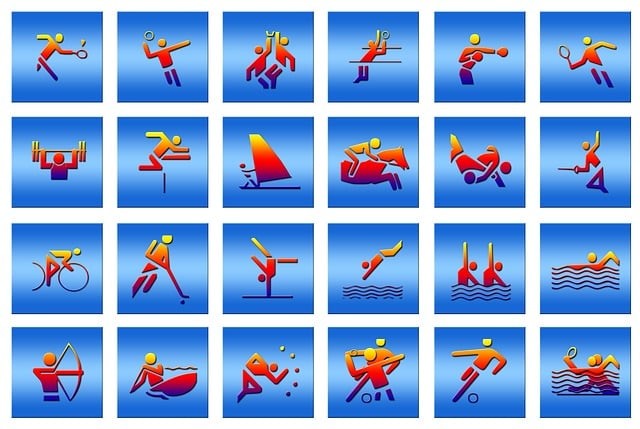How Dear Cashmere Holding Co evolved into Swifty Global
 In the ever-evolving landscape of technology and innovation, one company’s transformation has caught the attention of industry experts and investors alike. We delve into the fascinating journey of how Dear Cashmere Holding Co evolved into Swifty Global, and the remarkable growth that followed.
In the ever-evolving landscape of technology and innovation, one company’s transformation has caught the attention of industry experts and investors alike. We delve into the fascinating journey of how Dear Cashmere Holding Co evolved into Swifty Global, and the remarkable growth that followed.
The journey of Swifty Global begins with a pivotal decision – the rebranding of Dear Cashmere Holding Co. This transformation was more than a change in name; it represented a complete shift in focus and vision. The decision to rebrand was driven by a desire to break new ground, explore uncharted territories, and redefine the company’s mission in the technology sector.
As Swifty Global emerged from the cocoon of its former identity, it quickly embraced innovation as its guiding principle. The company’s new direction was clear: to become a leader in groundbreaking blockchain and cryptocurrency solutions. This shift in focus was not merely cosmetic; it was a fundamental reorientation of the company’s core values and objectives.
One of the most significant developments during this transformation was the birth of Swifty Gaming, a subsidiary of Swifty Global. Swifty Gaming was established with a singular mission – to revolutionize the gambling and sports betting sector. With a focus on cutting-edge technology and user-centric design, Swifty Gaming quickly gained traction in an industry that was ripe for disruption.
In its first full year of operations under the banner of Swifty Global, the company achieved a level of growth that exceeded all expectations. The numbers spoke for themselves – a staggering $68 million in revenue and a robust cash flow. This success was a testament to Swifty Global’s ability to execute on its new vision with precision and excellence.
Swifty Gaming played a pivotal role in this remarkable growth story. As the subsidiary responsible for the gambling and sports betting ventures, it introduced a level of innovation and user experience that set it apart from traditional players in the industry. Swifty Gaming’s proprietary swipe betting Sports Predictions App, Sportsbook, and Casino platforms were met with enthusiasm and quickly gained a loyal following.
Swifty Global’s growth did not stop at revenue numbers; it extended to its global footprint. The company successfully obtained licenses in multiple jurisdictions and expanded its operations to encompass five countries. This expansion was a clear indicator of Swifty Global’s readiness to compete on a global scale.
As Swifty Global continues to accelerate its growth trajectory, the company remains committed to its vision of becoming a global leader in the technology sector. The success of Swifty Gaming is a testament to the power of innovation and customer-centric design. With plans for further territorial expansion and the rollout of new technologies, Swifty Global is poised for an exciting future.
Behind this remarkable transformation and growth story is a team of dedicated professionals led by James Gibbons, the CEO of Swifty Global. His leadership and determination have been instrumental in steering the company towards its current success. Despite market challenges, he remains unwavering in his commitment to Swifty Global’s mission.
Nicolas Link, the Chairman of Swifty Global, provides valuable insight into the company’s journey. He sees Swifty Global as a symbol of resilience and adaptability. The transformation from Dear Cashmere Holding Co to Swifty Global was a strategic move that has paid off handsomely. The success of Swifty Gaming has exceeded expectations and positioned the company for a bright future.
The journey from Dear Cashmere Holding Co to Swifty Global is a testament to the transformative power of vision and innovation. Swifty Gaming’s role in this journey, especially in the realm of gambling and sports betting, cannot be overstated. As Swifty Global continues its expansion and exploration of new territories, it stands as a beacon of success in the technology and gaming sectors.
In a world where adaptability and innovation are keys to success, Swifty Global has demonstrated its prowess, leaving behind a legacy that will undoubtedly inspire others in the industry.
 Emily Wilding Davison was an influential British suffragette who, on June 4, 1913, suffered fatal injuries after being knocked down by a horse during the running of the Derby at Epsom. The horse in question was Anmer, owned by King George V, the paternal grandfather of Queen Elizabeth II, and ridden by Herbert ‘Bertie’ Jones.
Emily Wilding Davison was an influential British suffragette who, on June 4, 1913, suffered fatal injuries after being knocked down by a horse during the running of the Derby at Epsom. The horse in question was Anmer, owned by King George V, the paternal grandfather of Queen Elizabeth II, and ridden by Herbert ‘Bertie’ Jones. For most beginners or non-betting people, betting is simply a prediction of the outcome of a particular event. People think you can only bet on the win or loss of a specific team. However, the world of betting is much richer and more interesting. There are different types and betting markets. Let’s learn
For most beginners or non-betting people, betting is simply a prediction of the outcome of a particular event. People think you can only bet on the win or loss of a specific team. However, the world of betting is much richer and more interesting. There are different types and betting markets. Let’s learn  The state of the ground, or going, on a racecourse is often a determining factor in where, when and how well racehorses run. Soft going is deep, moist and slightly muddy, thereby presenting a challenge that some horses relish, but others absolutely detest. However, there are several ways you can tell, or least make an educated guess, that a horse acts on soft going. In order of efficacy, they are its previous performances on the racecourse, its pedigree, its confirmation and gait and, last, but by no means least, the size of its feet!
The state of the ground, or going, on a racecourse is often a determining factor in where, when and how well racehorses run. Soft going is deep, moist and slightly muddy, thereby presenting a challenge that some horses relish, but others absolutely detest. However, there are several ways you can tell, or least make an educated guess, that a horse acts on soft going. In order of efficacy, they are its previous performances on the racecourse, its pedigree, its confirmation and gait and, last, but by no means least, the size of its feet!